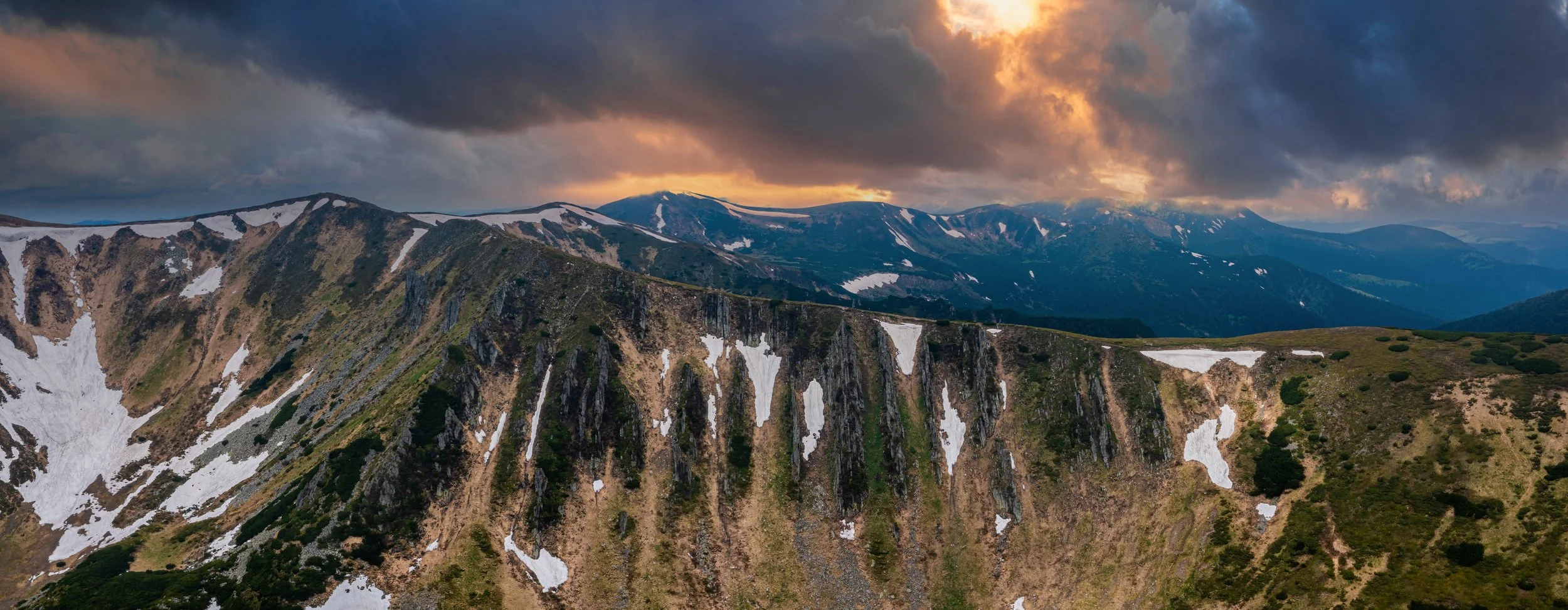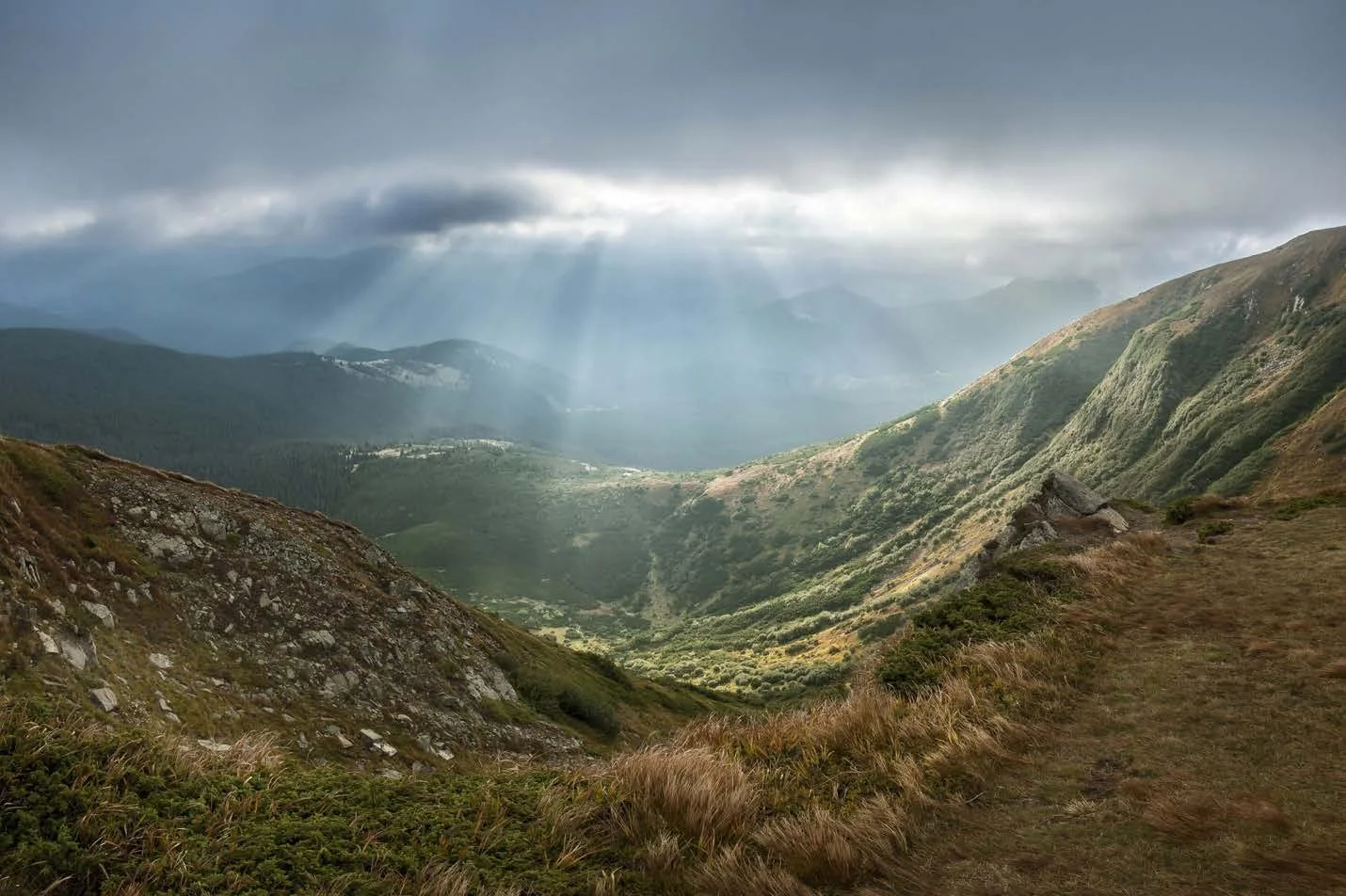Great Carpathians National Park: Establishing Europe’s Largest National Park and Wildlife Habitat
An aerial view of the Carpathian Mountains. Photo ©adobestock.com
Global Conservation has been working in Ukraine for the past six years with four national parks, leading scientists, conservation planners, communities, and local NGOs, along with the Ministry of Environmental Protection and Natural Resources of Ukraine, to establish the largest new National Park in Europe, a stunning vision of hope for humans, forests, and wildlife in a war-torn country.
Great Carpathians National Park will permanently protect nearly 90,000 hectares of pristine wilderness, old-growth forests, and endangered wildlife habitats for bears, wolves, lynx, and mink—long extinct in Europe—in the heart of the Carpathian Mountains of Ukraine.
Great Carpathians National Park will become the primary hub for wildlife connectivity between five national parks and biosphere reserves comprising over 200,000 hectares, providing essential water and environmental services to over 2 million people, and is a critical new national park enabling Ukraine to achieve the UN goal of ‘30x30’ protection of the country by 2030.
Unlike any other national park in Ukraine or Europe in its scale—intact forests, mountain ranges, and river ecosystems—Great Carpathians National Park is 100% dedicated for recreational and scientific use and has no existing human populations in the proposed national park.
With millions of visitors coming to the Carpathians every year, surrounding communities will benefit greatly from Great Carpathians National Park, with the potential to generate over $5 million a year in economic development by 2040.
Great Carpathians National Park is Europe’s Last and Only Wilderness
Representing a new era in large-scale protection of Ukraine’s wildest and most intact ecosystems—a living mosaic of forests, rivers, and alpine meadows that sustain both wildlife and people. The new national park will cover 87,000 hectares and connect with nearby national parks and biosphere reserves to create an ecological network of over 190,000 hectares for migratory species such as brown bears, deer, lynx, and wolves, today critically endangered due to hunting and sprawling human development.
Great Carpathians National Park is Ukraine’s Greatest Opportunity for Nature-based Development
After the Russian invasion destroyed national parks and ecosystems across the Eastern Front with mines, unexploded ordnance, and wartime destruction of nature on a massive scale, Ukraine’s new Great Carpathians National Park will be a bastion of hope for nature and rehabilitation of veterans maimed and injured from the war. GC is proposing the creation of a Veterans Rehabilitation and Nature Therapy Center for those affected by war, integrating recovery facilities with environmental stewardship.
Great Carpathians National Park is a model for Ukraine and the world for nature conservation in an era of wilderness and nature scarcity and will protect forests and biodiversity needed for the survival and prosperity of future generations, while preserving cultural heritage and bringing sustainable economic benefits for local communities.
In autumn, you can find groups of brown bears foraging together. Photos ©Oleg D. / shutterstock.com
Exceptional Biodiversity of Great Carpathians National Park
Home to over 23 types of natural habitats from Resolution 4 of the Bern Convention, 451 species of higher vascular plants (73 species are Red Book and IUCN-listed), 153 species of mosses (18 species are Red Book and IUCN-listed), 157 species of vertebrates (44 species are Red Book and IUCN-listed), and 803 species of invertebrates (14 endemic, 22 identified as rare and endangered).
Great Carpathians National Park will be the largest intact wilderness without roads or railways and human development, with over 190,000 hectares for bears, lynx, wolves, and mink, as well as rare birds of prey.
Great Carpathians National Park is the source of the Svicha and Limnytsia rivers, crucial for regional water security, supplying over 2 million people. Landscapes ranging from ancient beech forests to alpine meadows and glacial lakes, it is integral to the UNESCO World Heritage listing—Ancient and Primeval Beech Forests of the Carpathians and Other Regions of Europe.
In addition to ecological value, history and cultural heritage are rich in the Carpathians—ancient cultures, historic trails, wooden churches, and the traditions of highland communities. The national park preserves this rich cultural heritage and supports traditional livelihoods, crafts, and ecotourism, creating a model for sustainable development in remote mountainous regions of Ukraine.
The Vision: A Living Park
Great Carpathians National Park will serve as a beacon of conservation, education, and healing from the war and an international learning hub for ecology, climate, and sustainable mountain communities.
Theory of Change
INPUTS ➤ ACTIVITIES ➤ OUTPUTS ➤ OUTCOMES ➤ IMPACT
Funding + Expertise ➤ Park Establishment ➤ Strong Management ➤ Biodiversity & Community Resilience ➤ Lasting Conservation
Key Benefits
Impact: Safeguards Europe’s largest wilderness and biodiversity hotspot.
Rehabilitation: Provides a safe, healing space for veterans and civilians affected by war.
Climate Resilience: Protects watersheds, soils, and carbon-rich forests.
Sustainable Development: Creates jobs and promotes ecotourism.
Cultural Legacy: Strengthens ties between people and nature.







